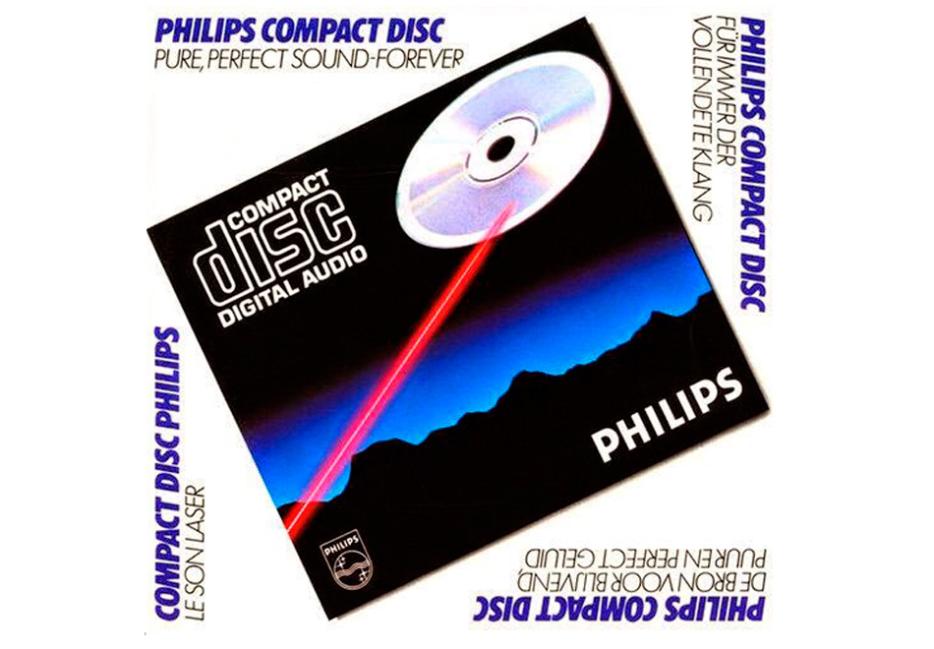What was important to us in 2016? Hazlitt’s writers reflect on the year’s issues, big and small.
In 1982, the electronics company Philips developed an ad campaign to promote the international launch of the compact disc, an emerging storage format that could hold up to eighty minutes of audio and was designed to replace the vinyl record as the primary media system for listening to music. The tagline, “Pure, Perfect Sound-Forever,” was an epic promise, a suggestion that, unlike their larger grooved cousins, these new CDs would never degrade—that your investment would never be diminished.
Of course, this wasn’t true. CDs are made of plastic. The surface containing the data scratches easily, creating skips and defects heard during playback. Their flimsy cases often do a poor job of correcting for human error—as anyone with a funky aunt or uncle can attest, the backseat of your average late ‘90s sedan doubled as a mismatched disc graveyard.
Developing an intimate relationship with flawed media is something that a generation with access to complete discographies in the palms of their hands might not understand. This longing for the defective has been fetishized: the warmth and slow degradation of a well-worn cassette, the crackle of a vinyl record, even the occasional perfectly looping skip of a compact disc carries some charm. It’s also been commercialized: Vinyl, considered all but dead in the wake of the compact disc, has roared back to life thanks to specialty events like Record Store Day, is currently selling at a twenty-eight-year high and, this year, outsold digital downloads for the first time in history. Kanye West’s Yeezus packaging, consisting of a clear CD case with a strip of red tape, was an artistic statement about the state of physical media. A large swath of independent musicians are putting out new albums on cassette, along with commercial bands like Blink-182 and Eminem re-releasing some of their back catalogue on tape over the past couple years. The 2000s saw a brief resurgence in purposefully lo-fi music by bands like Ariel Pink’s Haunted Graffiti and Wavves which was primarily listened to on modern implements such as laptops and MP3 players. The same way people my age quaintly remember LiveJournal sites and MSN Messenger chats with a faint wistfulness for their humble lack of unscalability and one-dimensional purposes, I have fond memories of using RealAudio links to hear distorted, tinny eight-kilobyte-per-second streamed snippets of underground rap albums before ordering the physical CDs up to Canada.
In Vivian Sobchack’s “Nostalgia for a Digital Object: Regrets on the Quickening of QuickTime,” the author bemoans the inevitability of the titular movie files leaving the computer for the big screen, losing some of the spirit that can only be found in the miniature space in the process:
“…QuickTime will eventually and seamlessly ‘stream’ into real-time and live-action ‘cinema’. But something quite poetic will be lost. Call me retrograde: as QuickTime enlarges and quickens to the myth of total cinema, I feel nostalgia for the impending loss of a unique historical experience and a rare and precious digital object.”
When I listen to my low-bitrate MP3 of the obscure UK grime track “Sufferers (Freeze Remix)” by Roll Deep, I still look forward to the subtle skip/unintentional edit around eight seconds in as if it were a lyric in the song. I can hear a slight ground hum from the record player that my file of cLOUDDEAD’s “Sound of a Handshake” was originally ripped from. It’s become like another layer of production, this flawed vestige of old technology unintentionally transferred to the digital realm.
Even a primitive music theft deterrent carries nostalgia with it: the first online leak of Justin Timberlake and T.I.’s “My Love” was sonically tagged with a voice repeating “Atlantic Records, T.I. clearance” at random intervals. Back then, labels would rather make music unlistenable than allow people to hear it for free. But in today’s impossibly saturated digital marketplace, albums are often first heard online as temporarily exclusive streams on sites such as NPR and Noisey; it’s hard to imagine that any artist would allow their music to be defaced with a label-ordained vocal drop here in the era of the surprise release.
I still have the psychological desire to know that my music is in a concrete physical location, an old remnant of physical media ownership. I also have a relatively unwarranted fear of The Cloud, that mystical realm where you put all your DJ Slimzee pirate radio mixes before they evaporate into digital condensation forever.
These moments might be the reason I’ve only recently started to actively use services like Spotify, Tidal and Apple Music. These are the streaming services that appealed to both audiophiles and casual listeners with their ease of access and intuitive interfaces, making navigating the popup ads and fake links that populate the Internet’s illegal file-sharing black market even more unpalatable. Every song on Spotify is a perfect representation, beamed to you at hyper speed wherever you may be, in a manner that (barely) allows the consumer to support the people who make the art. Echoing the Philips CD ad campaign back in the ‘80s, Tidal, which provides customers who pay more with high-quality lossless FLAC files, boasts the tagline “High Fidelity Music Streaming.” The music delivery systems for each of these services are rigorously quality-controlled from the instant the songs are uploaded by labels and artists—there’s no room for accidents (unless you’re Kanye, who followed up an album with a CD case for a cover with the first record to feature multiple software updates in The Life of Pablo).
Yet despite all this easy, flawless choice, I still primarily choose to fill the 128-gigabyte SD card in my smartphone with MP3s of varying degrees of quality. I still have the psychological desire to know that my music is in a concrete physical location, an old remnant of physical media ownership. I also have a relatively unwarranted fear of The Cloud, that mystical realm where you put all your DJ Slimzee pirate radio mixes before they evaporate into digital condensation forever.
*
All this perfection leaves a whole different realm of discoverability out of the equation. I’ll never forget trying to download a leaked version of The Eminem Show, opening up the .zip file and realizing that someone had made a bunch of fake five-minute versions of the tracks created out of ten-second loops of the album’s choruses. It’s the type of impish prank that Eminem might’ve come up with himself. (This experience also turned out to be more memorable than the actual LP.) There’s no infrastructure for that kind of mix-up anymore. There’s a limit to how surprised you can be by what an algorithm tells you. I long for the Wild West days of file-sharing, where what was labeled “Stone Temple Pilots” might have actually been a Nirvana song I hadn’t heard before.
The MP3 democratized music, broadening its reach beyond anything Philips could’ve imagined in the early ‘80s. What we stand to lose with the glittering perfection of streaming is a parallel history of popular music, a particular spirit of happy accidents and wild improvisation that was once fostered on message boards and chatrooms and is now teetering on the brink of oblivion at the hands of the major label interests that now control SoundCloud. Ratty old files sit in my different hard drives of varying age and functionality, reminding me that any company promising sonic perfection is as flawed as one that might offer eternal life, that there is beauty in failure.






